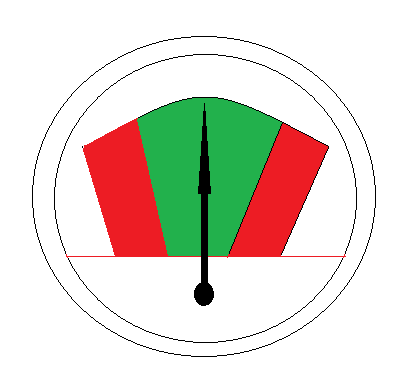Blog Layout
The HSE published figures states that there are 12,000 lung disease deaths each year estimated to be linked to past exposures at work, further to this, 1.6 million workers suffered from work-related ill health (new or long-standing) in 2019/20 (LFS).
Lung diseases are slow to develop, and these figures do represent past exposure, but this does not mean we are no longer exposing employees to harmful substances.
Air sampling to measure exposure levels of personnel should be carried out as part of a robust health monitoring program by any employer that uses hazardous substances in their workplace. Having a health monitoring program in place would identify the need to have improved control measures implemented without subjecting employees to long term exposure. The substance that employees are exposed to, the amount of time they are exposed, and the concentration of the substance all play a part in the controls that are required. Lung diseases are slow to develop, and these figures do represent past exposure, but this does not mean we are no longer exposing employees to harmful substances.
Where local exhaust ventilation (LEV) is installed to provide the engineering control, it is likely that air sampling will have been carried out and identified that exposure is over the limits set out in the HSE document EH40 and that there is a need for improved control of exposure. It is worth pointing out that following the hierarchy of control may lead you to a solution that is more suitable than an engineering control.
However, if LEV is the best solution to control hazards produced by your process, then air sampling should be carried out immediately following the commissioning of the system, to prove the effectiveness of the system at reducing exposure levels.
There are several types of air sampling that can be carried out and these should be carried out by competent and qualified occupational hygienist.
The most likely type of sampling would be active sampling, this involves the employee wearing a sampling head, connected to a pump to replicate normal aspiration, within their breathing zone. The breathing zone is an area around the mouth and nose from where the person draws in air, this is approximately 30cm in diameter.
The sampling can be based on short term exposure (15-minute sample) or long-term exposure (8-hour sample). This method would give the exposure level of an employee in a normal working day.
Another type of sampling is static sampling, this is where fixed monitors are positioned in places where there is a possibility of contaminants escaping from the control measure. For example, outside of a partial enclosure where there is an open face. This method does not give any indication of individual exposure, only that the control measure is or is not effective at containing the hazard.
Grab sampling, often used by LEV examiners, gives an instant measurement of the level of contaminant in the air. This is a very cost-effective way of proving control but can be misleading if not interpreted correctly. This method only gives an indication at the time it was taken and cannot be used to calculate short on long term exposure of personnel.
There are other types of air sampling such as bulk sampling or passive sampling, selecting the correct sampling process requires experience and knowledge.
The body content of your post goes here. To edit this text, click on it and delete this default text and start typing your own or paste your own from a different source.
30 Mar, 2021
To answer this fully we need to give a bit of background, local exhaust ventilation (LEV) systems are engineering controls put in place to prevent employees from exposure to hazardous substances. Regulation 7 (1) of The Control of Substances Hazardous to Health Regulations 2002 (as amended) states. “Every employer shall ensure that the exposure of his employees to substances hazardous to health is either prevented or, where this is not reasonably practicable, adequately controlled. “ Under regulation 9 of the COSHH regulations, engineering controls provided to meet the requirements of regulation 7, the employer shall ensure that thorough examination and testing of those controls is carried out. This must be carried out by a competent person. Thorough examination, and testing (TExT) is also referred to as COSHH testing, statutory or routine inspections, and most commonly as LEV Testing. No matter what it is called, it is a legal requirement to have your LEV system subjected to a TExT by a competent person at least once in every 14-month period. There are certain systems that require more frequent inspections which are detailed in Column 1 of Schedule 4 the COSHH regulations. There are a few key components that are present on all systems. These are the hood, duct work, fan, and discharge, most systems have filtration installed too. The inspection ensures that control is being achieved at all sources or potential points of exposure to the hazardous substance, this means assessing the entire process not just the portion carried out under the LEV system. The assessment of control is done by using a combination of physical measurements and visual checks to prove its effectiveness. Measurements are taken at the hoods and various points in the ductwork/discharge to make sure the air speed is sufficient to keep the fume, vapour, dust or mist suspended in the air stream until is cleaned by a filter or discharged outside of the working area to a safe place. If the air is being cleaned, checks are also carried out on the filter to make sure it is effective, and the air being discharged is clear from contaminants. The plant, duct and hoods are also checked for their condition, suitability for the contaminant being controlled, fire rating, explosion rating and more. There are several other regulations and guidance documents that are relevant dependent on the environment, hazard, and processes. When control cannot be achieved fully by LEV alone, other measures can be used and these are also assessed for suitability and protection factors. This means that workplace exposure levels are measured to make sure exposure levels are below the levels set in HSE document EH40/2005- Workplace exposure limits. From an outsider’s perspective, the inspection may appear to be a simple check of performance but to the trained eye, observations are being noted throughout the entire visit to make sure you and your employees are protected from exposure to hazardous substances and that your control systems are, and remain, fit for purpose. We cant cover everything in a short post but hopefully this gives you an idea of what is involved and why it is important to bring in professional help.



